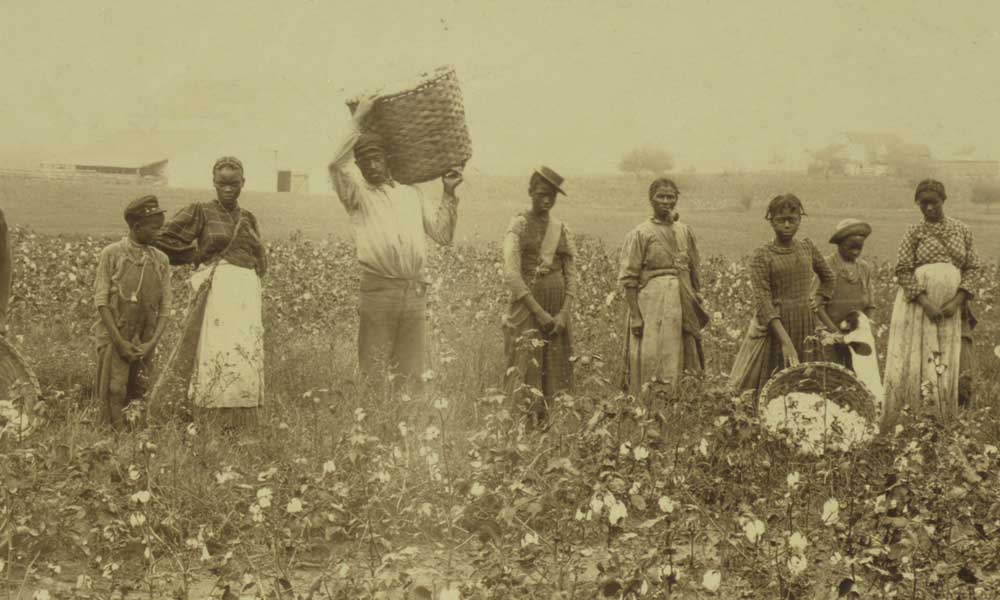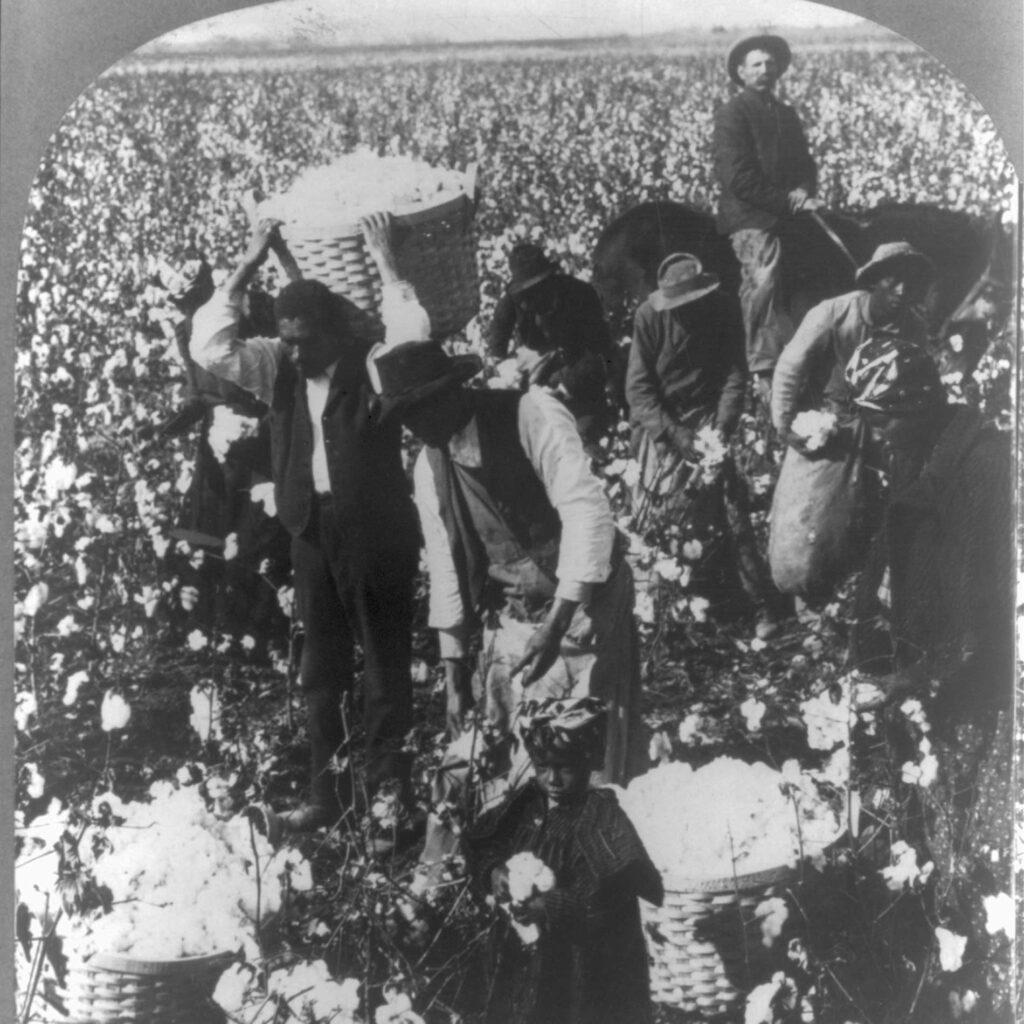Sidebar
The Economics of Enslavement

Library of Congress
Beyond its benefit to Southern plantation owners, American slavery was a major engine of prosperity throughout the United States and worldwide. The labor of enslaved Black people in the United States fueled explosive economic growth and wealth accumulation during the 19th century, particularly within the vast cotton and textile trades. Many Northern businesses and families made wealthy in this era still retain those riches today, and can directly trace their fortunes to the toil of the enslaved.
By 1830, one million people in America labored in the cultivation of cotton, and almost all of them were enslaved. Cotton constituted more than half of the United States’ global exports. In addition to cotton, nearly all American industries were dominated by an economy dependent upon the work of enslaved people. Merchants in the North traded cotton, sugar, and other agricultural products grown by enslaved people. Banks and creditors accepted enslaved human “property” as collateral when underwriting loans, and were authorized to “repossess” enslaved people if a debtor failed to repay the loan. In this way, financial institutions became directly involved in human trafficking.1 Sven Beckert, “Slavery and Capitalism,” Chron. of Higher Educ., December 12, 2014; see also Edward E. Baptist, The Half Has Never Been Told: Slavery and the Making of American Capitalism (New York: Basic Books, 2016).
As the Domestic Slave Trade expanded to meet the demand created by the booming cotton industry, cotton fueled America’s emergence as the world’s fastest-growing economy. Between 1810 and 1860, one million enslaved Africans were forcibly transported from the Upper South to the Lower South, and traffickers accumulated vast wealth in the process. Federal laws like the Fugitive Slave Acts facilitated the widespread kidnapping for profit that left all Black people vulnerable.
The bodies of Black men, women, and children enslaved in America were assigned monetary values throughout their lives. An enslaved person’s purchase price was a painful reminder of how his or her life was commodified, and changes in this assigned monetary value could profoundly affect an enslaved person’s destiny. Some of the greatest heartbreaks and inhumanities of enslavement arose from the cold valuation of human life.2 See Daina Ramey Berry, The Price for their Pound of Flesh: The Value of the Enslaved, from Womb to Grave, in the Building of a Nation(Boston: Beacon Press, 2017).

Library of Congress
Enslaved people were also appraised as human “assets” to allow enslavers to report on their “property” holdings for the purposes of insurance, wills, and taxes. Values for enslaved people could reach more than $5,000, representing more than $150,000 today. Enslavers regularly ignored family bonds among enslaved people to prioritize profit goals, and treated reproduction as an economic process. After puberty, an enslaved woman’s value was largely set based on her ability to bear children. Enslaved men were most prized for their physical ability, and men in their thirties considered to possess peak strength and skill could be advertised as “prime hands,” “full hands” or “A1 Prime.” Depending on health and strength, enslaved men typically received high appraisals well into middle age, while enslaved women lost much of their value once past childbearing age.3 Ibid.
Because enslavement was a permanent and hereditary status, by law, enslaved men and women had no recognized parental rights, and children could be sold from infancy. A child’s value was calculated annually and influenced by health, demeanor, and skills. Many historical accounts describe aggrieved parents attempting to raise money to buy their own children; typically these efforts were unsuccessful.4 Ibid., 33-57.
Profits from slavery laid the path for the Industrial Revolution, helped to build Wall Street, and funded many of the United States’ most prestigious schools. Today, slavery is a prominent though largely ignored foundation of this nation’s wealth and prosperity. Major companies and universities profited off of the institution of slavery, including Aetna, Inc., New York Life Insurance Company, JP Morgan Chase, Harvard, Columbia, Princeton, and Yale. In 1838, two of Georgetown University’s early presidents organized a massive auction to help the school evade bankruptcy, and sold 272 Black people for $3.3 million. As one professor later said, “The university itself owes its existence to this history [which is] a microcosm of the whole history of American slavery.”5 Baptist, The Half Has Never Been Told, xxv-xxvi; Atlanta Black Star, “15 Major Corporations You Never Knew Profited from Slavery,” August 26, 2013; Rachel L. Swarns, “272 Slaves Were Sold to Save Georgetown. What Does it Owe Their Descendants?” New York Times, April 17, 2016; Stephen Smith & Kate Ellis, “Shackled Legacy: History Shows Slavery Helped Build Many U.S. Colleges and Universities,” American Public Media, September 4, 2017; Greg Grandni, “How Slavery Made the Modern World,” The Nation, February 24, 2014; Tom Jacobs, “Slavery’s Legacy: Raced Based Economic Inequality,” Pacific Standard, June 19, 2014; Eric Herschital, “How Slavery Gave Capitalism its Start,” Daily Beast, April 24, 2015; Ta-Nehisi Coates, “The Case for Reparations,” The Atlantic, June 2014.